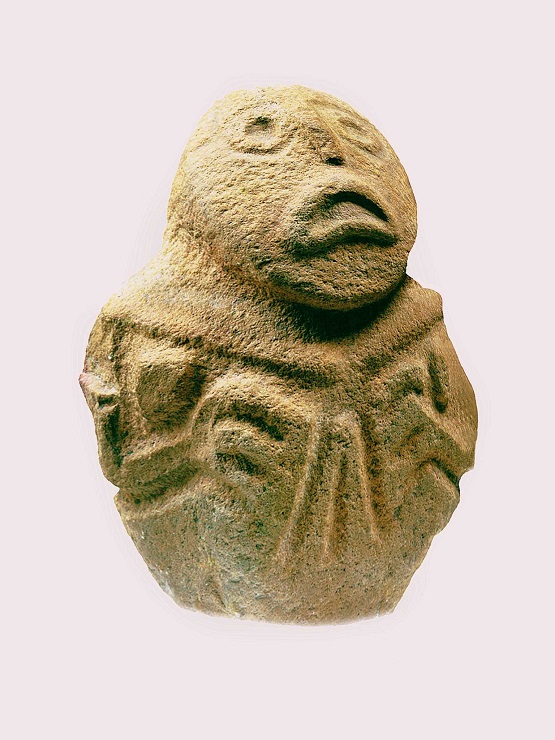During the 1960’s and the 1970’s, on the border between Romania and Serbia in a rocky gorge that is called the Iron Gate, one of the most important archaeological discoveries in regard to understanding the neolithisation process of Europe was made. On the left and the right bank of the Danube a total of cca. 20 sites were unearthed (e.g. Padina, Lepenski Vir, Vlasac, Hajdučka Vodenica Climente and Schela Cladovei) thereby enabling the documentation of the settlements that had originated between the 6th - 10th millennium BC and describing the development of the settlement during the late Palaeolithic, the Mesolithic and the Neolithic ages.
 |
|
One of the stone sculptures that was discovered in Lepenski Vir. A woman with a typical face that resembles a fish head, who stretches her genitals with her hands, represents a rare witness to the spiritual world of early European farmers. |
The richest archaeological site is the tella settlement and burial site Lepenski Vir, in accordance with which this archaeological culture was named Lepenski Vir - Schela Cladovei. Within its area, in different layers dating from the mid 10th to the mid 6th millennium BC, the available evidence regarding the settlement and its burial activities was examined, thereby documenting its transition from the Mesolithic hunter-gatherer lifestyle to the Neolithic lifestyle, which was based on crop cultivation and animal husbandry. Archaeological sources were divided into four horizons: Protolepenski Vir 1 and 2 (9500-7500 BC), the lack of continuity in the settlement (7500-6300 BC), Lepenski Vir I-II (6300-5900 BC) and Lepenski Vir IIIa, b (5900-5500 BC). Phase 3 of the settlement of the site (LV I-II) is the one in which the famous discovery of the remains of at least 50 houses of trapezoid plan occurs comprising evidence of the existence of fireplaces and of interior furnishings in the form of ornamentally decorated stone boulders. An anthropological analysis of numerous skeletal burials supports the hypothesis of implementing the acculturation process of by the original Mesolithic population’s adoption of a new way of farming.
Want to learn more?
Borič, D., and V. Dimitrijevič. 2007. When did the „Neolithic package“ reach Lepenski Vir? Radiometric and faunal evidence. Ducumenta Praehistorica 34: 314–317.
Radovanovic, I. 2000. Houses and burials at Lepenski Vir. European Journal of Archaeology 3:330-349.
Srejovič, D. 1969. The Roots of the Lepenski Vir Culture. Archaeologia Iugoslavica 10:13-21.
 Archeologické 3D virtuální muzeum
Archeologické 3D virtuální muzeum

.jpg)